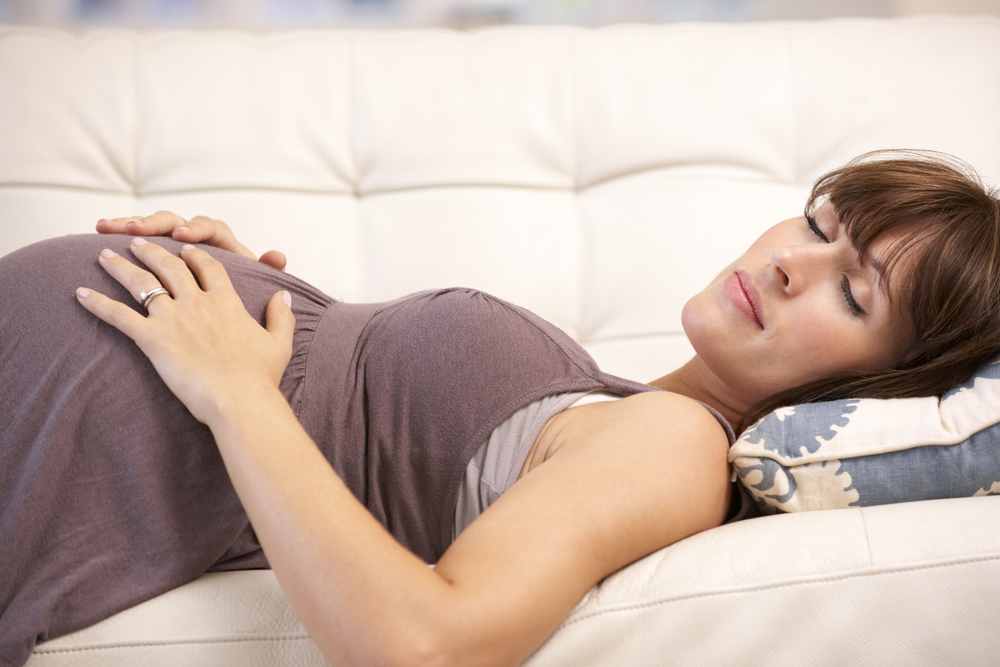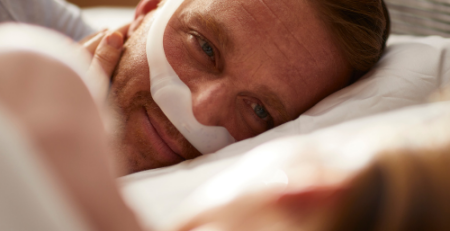Pregnancy and sleep apnea: what you need to know
Sleep apnea during pregnancy can cause problems for both the foetus and the mother, as well as premature births or unplanned caesarean sections.
Sleep apnea is a serious problem that can have serious repercussions on the health of those who suffer from it. During pregnancy, the risks are even greater, which is why it is essential to consult a specialist at the slightest symptom.
This respiratory disorder manifests itself in the form of pauses in breathing during sleep. In the case of pregnant women with no previous symptoms, it may appear in the last trimester of pregnancy, when the body mass index is higher. Other aspects, such as the mother’s age or obesity, can increase the risk of sleep apnea.
According to a study in the journal Thorax, the prevalence of sleep apnoea syndrome in pregnant women is 8.4% in the first trimester and 19.7% in the third trimester. While the possibility of suffering from sleep apnoea increases according to two factors: the higher the body mass index and the older the mother-to-be.
What are the risks of sleep apnea during pregnancy?
During pregnancy, many women experience sleep disturbances, but these should not be confused with sleep apnea. Physiological changes in a woman’s body can cause discomfort or even snoring, which are, in any case, less serious problems.
Other signs that accompany pregnant women with sleep apnea are heavy or choked air during sleep, as a result of air trying to escape through blocked or narrowed airways.
Pregnant women with sleep apnea also tend to be more sleepy during the day and find it easier to fall asleep. As well as migraines in the morning, feelings of increased irritability, mood disturbances, the need to wake up frequently to urinate, dry mouth and throat on waking and even difficulty concentrating.
Sleep apnoea during pregnancy, on the other hand, can have serious consequences for both the pregnant woman and the foetus. In fact, it has been shown that in women with sleep apnoea, foetal movements can be reduced by up to 50% during non-REM sleep and 65% during REM sleep, when the muscles are almost completely relaxed. Research is currently underway into this issue and the consequences for a child if its mother has suffered from sleep apnoea during pregnancy.
One of these consequences is an increased risk of developing type 2 diabetes and insulin resistance. What are the effects of so-called gestational diabetes on the foetus? From being overweight, which can make natural childbirth difficult, to premature birth or breathing difficulties at birth.
It should be borne in mind that obesity in itself causes respiratory problems, so the extra volume in mothers can cause complications during sleep. In this regard, it is important to highlight a study carried out at the Rush Medical Center of the University of Chicago that concluded that 7 out of 10 pregnant women with gestational diabetes may suffer from sleep apnoea, something that is complicated if there are other risk factors, such as hypertension or obesity.
But not only in the foetus, diabetes in pregnancy causes pre-eclampsia in the mother, a high blood pressure that can endanger both the life of the pregnant woman and the baby. It also increases the risk of diabetes recurrence in the future. Reason enough to control sleep apnoea if it occurs during pregnancy.
But there are other consequences. We point out that sleep apnoea manifests itself in the form of pauses in breathing. Pauses that are continuous, that cause micro-awakenings and that affect the quality of sleep. In this sense, insufficient rest, lack of energy and the fatigue it causes, can lead to longer deliveries or even the need for unplanned caesarean sections.
Ghada Bourjeily, associate professor of medicine at Brown University in Providence, Rhode Island, has studied the links between sleep apnoea and pregnancy complications. She said women with sleep apnea during pregnancy were five times more likely to suffer from lung inflammation and up to 3.6 times more likely to have congestive heart failure. They were also twice as likely to need a hysterectomy, although she said: ‘We can’t say that sleep apnoea is causing these associations, so we have to be careful in interpreting this, but it is certainly associated.
How to avoid the risks of sleep apnea in pregnancy?
It is difficult to avoid the onset of sleep apnoea during pregnancy. Hormonal changes are one of the factors that can trigger it, as progesterone and oestrogen cause the throat to swell and the airways to relax, causing these pauses in breathing.
It is therefore very important to detect sleep apnoea as early as possible in order to take control measures. If you identify the symptoms mentioned above, such as loud snoring accompanied by choking, excessive sleepiness, headaches on waking up, dry mouth or mood swings, you should also consider the possibility of suffering from this disorder.
The first step is to consult a specialist to analyse the situation and diagnose whether or not the patient suffers from sleep apnea. If so, the most common and most effective treatment is the use of a CPAP. This is a device that blows air through a mask so that the airways remain open at all times.
If a CPAP cannot be used, there are oxygen therapy treatments or even oral devices that correct the position of the jaw to force air in. But, in any case, it should always be the specialist who recommends the most suitable treatment to fight sleep apnoea.
And another fundamental issue is the importance of keeping sleep apnea under control, even after pregnancy. This disorder may be temporary, but it is important to ensure that it does not reappear or to maintain treatment if it does not disappear after birth.
The importance of sleeping posture
Falling asleep during pregnancy can be tricky until the pregnant woman finds the most comfortable sleeping position for herself and, of course, the foetus. However, things become more complicated when the pregnant woman suffers from sleep apnea. Achieving a better posture is essential for the health of both.
Experts are clear: most recommend sleeping on the left side, as this makes it easier for blood supply and gastric flows to pass without pressure. It also increases the amount of blood and nutrients reaching the placenta and baby.
According to a research group from the University of Granada – Lo Monaco, sleeping on your back prevents acidity and reflux, leaves the spine more relaxed, avoids pressure on the face and thus prevents wrinkles, although it is a posture that favours snoring, and sleeping on your side in the foetal position relieves lumbar tension, although it can affect the back and, in women, the sagging of the breasts.
When the pregnant woman reaches the last trimester of pregnancy, a change of sleeping position is recommended and here the supine position is undoubtedly the best. In other words, the body should be supported in the horizontal plane at the back, as this contributes to the correct position of the uterus. Pregnant women are also advised to have a healthy weight despite this last phase, in order to reduce extra risks and complications at the time of delivery.
Terapia CPAP Portugal
Latest posts by Terapia CPAP Portugal (see all)
- Sleep apnea with other illnesses - 21 de July de 2023
- What is an oxygen concentrator and what is it for? - 23 de June de 2023
- Sleep apnea machine - 5 de December de 2022
- Difference between CPAP and BIPAP - 22 de November de 2022
- Narval CC mandibular advancement for sleep apnea - 14 de November de 2022




















Leave a Reply